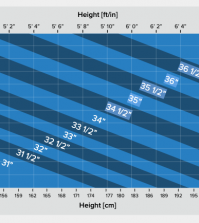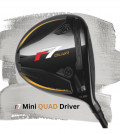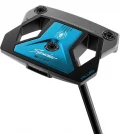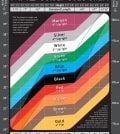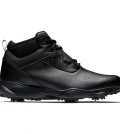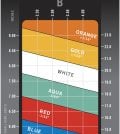- The Best Golf Chippers 2026 – UpdatedPosted 1 month ago
- Is the Ping BunkR the Best Sand Wedge of 2025?Posted 1 month ago
- What Length of Putter Do I Need? Quick and Simple GuidePosted 1 month ago
- Titleist Driver Settings – Titleist GT3 Driver SettingsPosted 1 month ago
- Top 3 Best Beginners Golf Package Sets 2025Posted 1 month ago
- The Golf Shop Online Discount Vouchers and Codes – Official SitePosted 2 months ago
- The Best Golf Tops for 2026Posted 2 months ago
- Is the Callaway Mini Driver Pointless — Or a Fairway-Finding Secret Weapon?Posted 2 months ago
- Titleist Vokey Wedges – The Ultimate Guide to the Number 1 WedgePosted 2 months ago
- Top 5 Best Waterproof Cart Bags for 2025Posted 2 months ago
The Best Electric Trolley Buying Guide – Updated for Powakaddy and Motocaddy
Electric Trolley Buying Guide
Investing in an electric trolley can revolutionize your golfing experience, providing convenience, ease of use, and added enjoyment on the course. However, before purchasing, you must consider a few key factors to select the proper electric trolley that meets your needs and enhances your game. This electric trolley buying guide will explore the seven crucial things you need to know before buying an electric trolley.
- Battery Life and Range
- Should I get a lead acid battery or a Lithium Battery?
- Do I need to get a trolley with a GPS function?
- Do I need an Electronic Breaking System?
- Should I buy a compact or standard version?
- Will my golf bag fit on an electric trolley?
- Which Brand Should I Buy?
Best Selling Electric Golf Trolleys
Battery Life and Range
One important decision when choosing an electric trolley is whether to opt for an 18-hole (standard) or 36-hole (extended) battery. Here are a few factors to consider when deciding which battery option is right for you:
- Playing Frequency: Assess how often you typically play golf and the duration of your rounds. If you play occasionally or have shorter rounds, an 18-hole battery should suffice. However, if you play frequently or enjoy longer rounds, a 36-hole battery may be more suitable to ensure you have enough power to complete your game without worrying about running out of charge.
- Course Length: Consider the length and difficulty of the golf courses you typically play. Longer courses or those with challenging terrains may require more power to navigate. If you frequently play on courses that demand more energy, a 36-hole battery can provide the peace of mind that you won’t run out of power before finishing your round.
- Battery Weight: Remember that a 36-hole battery is generally larger and heavier than an 18-hole battery. If portability and ease of transportation are important factors for you, consider whether you’re comfortable handling the additional weight of a 36-hole battery.
- Future Considerations: Consider any potential changes in your golfing habits or circumstances. If you anticipate playing more frequently or on longer courses in the future, investing in a 36-hole battery from the start may save you the hassle of upgrading later.
Ultimately, the decision between an 18-hole and 36-hole battery depends on your personal playing habits, course conditions, and preferences. Carefully assess your needs, playing frequency, and the above factors in determining which battery option will provide you with the optimal power and performance for your golfing experience.
Should I get a lead acid battery or a Lithium Battery?
Choosing a lead-acid or lithium battery is an important decision when considering an electric trolley. Here are some key points to help you make an informed decision:
- Battery Performance: Lithium batteries generally offer superior performance compared to lead-acid batteries. They are lighter, have a higher energy density, and provide more consistent power throughout the entire charge. Lithium batteries also tend to charge faster and have a longer lifespan.
- Weight and Portability: Lithium batteries are significantly lighter than lead-acid batteries. This can make a noticeable difference in portability, especially if you frequently transport your trolley or have to navigate hilly or challenging terrains on the golf course.
- Battery Life: Lithium batteries have a longer lifespan compared to lead-acid batteries. They can typically withstand more charge-discharge cycles before experiencing significant performance degradation. This means a lithium battery will likely last longer and provide reliable power for an extended period.
- Maintenance and Care: Lead-acid batteries require more maintenance compared to lithium batteries. They may need periodic water top-ups, proper charging and discharging cycles, and careful handling to ensure longevity. Lithium batteries, however, are generally maintenance-free and require minimal care.
- Cost: Lead-acid batteries are typically more affordable upfront compared to lithium batteries. However, it’s important to consider the long-term cost. Lithium batteries may have a higher initial investment, but their longer lifespan and superior performance can make them a cost-effective choice in the long run.
Ultimately, the decision between lead-acid and lithium batteries depends on your priorities, budget, and user preferences. If you value lightweight portability, consistent performance, and longer battery life, a lithium battery is a recommended choice. However, a lead-acid battery may still be viable if you have budget constraints or specific maintenance preferences. Evaluate your needs, weigh the pros and cons, and choose the battery type that best aligns with your requirements and golfing style.
Do I need to get a trolley with a GPS function?
Whether you need a GPS function to help with the distances of your golf shots depends on your preference and playing style. Here are some factors to consider:
- Course Knowledge: If you’re familiar with the golf course you regularly play on and know the distances to various landmarks and hazards, you may not necessarily need a GPS function. You can rely on your judgment and experience to estimate distances.
- Accuracy and Precision: A GPS function can provide accurate and precise distance measurements to various points on the golf course, such as the front, centre, and back of the green, as well as hazards and layup distances. This can help you make more informed club selections and strategic decisions.
- Course Variation: A GPS function can be particularly useful if you frequently play on different golf courses or are exploring new courses. It allows you to quickly familiarize yourself with the layout and distances of unfamiliar courses, helping you adapt your game accordingly.
- Convenience and Efficiency: A GPS function eliminates relying on physical course markers, yardage books, or on-course signage. It provides instant and real-time distance information, allowing you to focus on your game and maintain a steady pace of play.
- Do you own a GPS watch or other device – If you already have a device that helps you with distances, such as a GPS watch or handheld device, then I doubt you will need this function on a trolley.
If you’re uncertain whether a GPS function is necessary, consider trying different options. Some golf courses offer GPS-enabled rental carts or handheld GPS devices you can test during a round. This can help you gauge the usefulness and convenience of having distance information readily available.
Do I need an Electronic Breaking System?
Whether you need a braking system on your trolley, such as an Electronic Braking System (EBS), depends on the type of golf courses you typically play on and your personal preferences. Here are some factors to consider:
- Course Terrain: A braking system can be handy if you frequently play on hilly courses with significant elevation changes. It helps maintain control and stability when navigating downhill slopes, preventing the trolley from gaining excessive speed and allowing for safer manoeuvring.
- Safety: A braking system adds a layer of safety to your golfing experience, especially when playing on courses with steep slopes or uneven terrain. It helps prevent the trolley from rolling away unintentionally and reduces the risk of accidents or collisions.
- Convenience: A braking system, especially an electronic one, provides convenience and ease of use. With a button or a simple control mechanism, you can use the brakes to secure the trolley during your shots or when stationary. This eliminates the need for additional physical effort or reliance on external objects to hold the trolley.
- Personal Preference: Some golfers may feel more comfortable and in control with a braking system, even on relatively flat courses. It provides reassurance and peace of mind, allowing you to focus on your game without worrying about the trolley rolling away.
It’s important to note that not all electric trolleys come with braking systems, and their availability may vary depending on the model and brand. When considering a trolley with a braking system, evaluate its specific features and capabilities, such as its effectiveness, responsiveness, and ease of operation.
If you primarily play on flatter courses or feel confident in manually controlling the speed and movement of your trolley, a braking system may not be essential. However, if you frequently encounter hilly or challenging terrains, investing in a trolley with an Electronic Braking System or a similar braking mechanism can enhance your overall golfing experience, provide added safety, and offer greater peace of mind.
Should I buy a compact or standard version?
Deciding between a compact foldable electric trolley or a standard-size trolley depends on your specific needs and preferences. Here are some factors to consider:
- Portability: A compact foldable trolley can be convenient if you frequently travel or have limited storage space. These trolleys typically feature a collapsible design that allows for easy transportation and storage. They are lightweight and can fit into smaller spaces like car trunks or storage lockers.
- Ease of Use: Compact foldable trolleys are often designed with user-friendly features, such as quick-release mechanisms and simple folding mechanisms. These make assembling and disassembling the trolley easier, allowing for efficient setup and breakdown at the golf course.
- Stability and Durability: Standard-size trolleys generally offer a more robust and stable platform. They often have a wider wheelbase and larger wheels, providing enhanced stability and manoeuvrability, especially on uneven terrain. A standard-size trolley may be a better choice if stability is a priority.
- Features and Accessories: Standard-size trolleys may offer more features and accessories, such as larger storage compartments, additional holders for accessories like scorecards and drinks, and advanced control options. Consider your desired features and whether a compact foldable trolley meets your requirements.
The decision between a compact foldable trolley and a standard-size trolley comes down to your individual needs, storage space, travel requirements, and personal preferences. Consider factors such as portability, stability, features, and user comfort to determine which type of trolley best suits your golfing lifestyle.
Will my golf bag fit on an electric trolley?
When fitting your golf bag on an electric trolley, you’ll generally find that most golf cart bags are compatible. These bags are specifically designed for trolleys and offer features like cart straps and base pads that facilitate a secure attachment.
However, it’s worth noting that certain bags may not work well with electric trolleys. Pencil bags, also known as Sunday bags, are lightweight and compact, typically lacking the structural support and stability required for secure placement on a trolley. Floppy stand bags, which have a flexible construction and lack a rigid base, may also pose challenges when used with an electric trolley.
With the Motocaddy and Powakaddy trolleys, these companies make bags that fit the trolley really well, and if you are investing in a new trolley, it may be a good addition to buying matching golf bags as well.
Which Brand Should I Buy?
When choosing an electric trolley, there are only two brands to choose from: Motocaddy or Powakaddy. Both brands have established themselves as leaders in the industry and offer a range of high-quality electric trolleys with excellent features and performance.
Motocaddy and Powakaddy are known for their dedication to innovation. They are the only two trolleys we feel worthy of putting in our electric trolley buying guide, reliability and customer satisfaction. They continually strive to develop cutting-edge technologies and incorporate user-friendly features into their trolleys. Whether you choose a Motocaddy or Powakaddy electric trolley, you can expect a well-designed and durable product to enhance your golfing experience.
While the two brands may have minor differences in features and design, the overall quality and performance are comparable. Ultimately, the choice between Motocaddy and Powakaddy comes from personal preference and individual needs. It’s recommended to consider factors such as specific features, pricing, customer reviews, and after-sales service when making your decision.
Motocaddy and Powakaddy have established reputations for delivering reliable and high-performing electric trolleys. Whichever brand you choose, you can be confident that you are investing in a trusted and reputable product that will make your rounds on the golf course more enjoyable and convenient.
Visit our YouTube channel for lots of Motocaddy or Powakaddy Reviews.
To summarise our electric trolley buying guide, you can make an informed choice that aligns with your needs and preferences by considering these seven key aspects before purchasing an electric trolley. Whether you’re seeking increased convenience, improved performance, or an enhanced golfing experience, an electric trolley can be a valuable addition to your golfing gear. Enjoy the benefits of effortless manoeuvrability and focus on what matters most – your game.
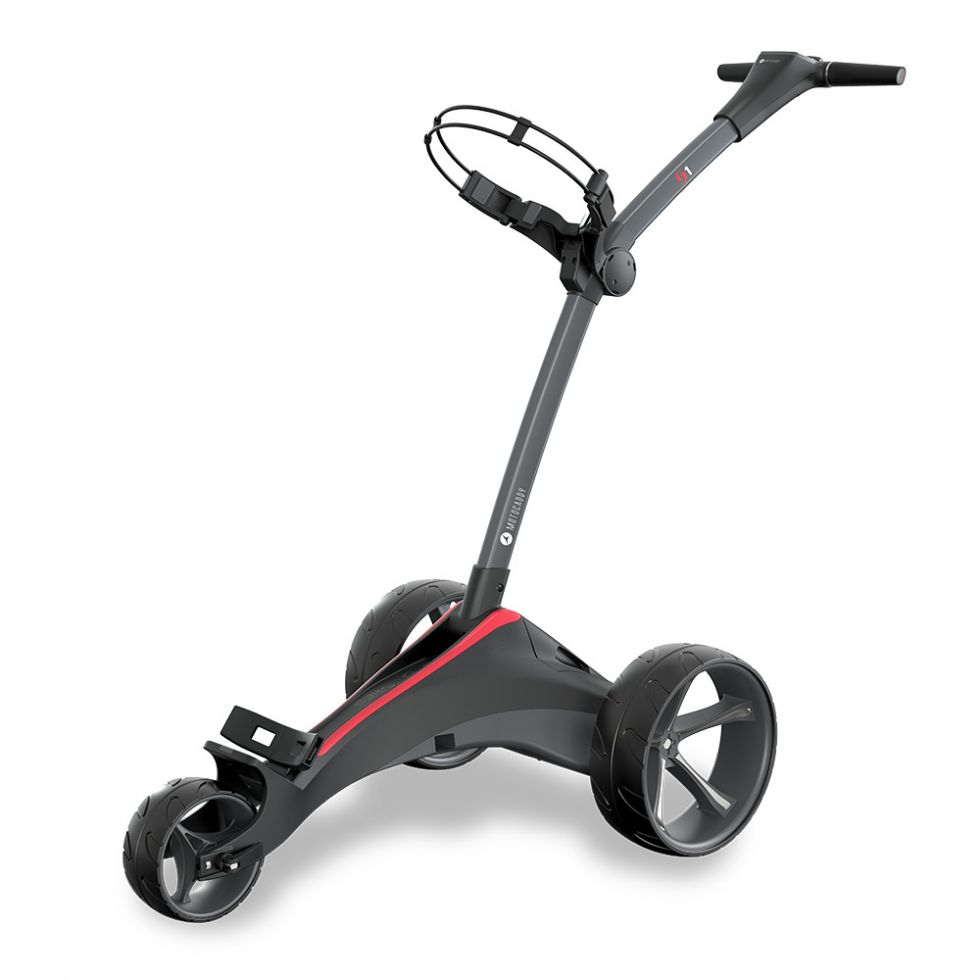
Electric Trolley Buying Guide




